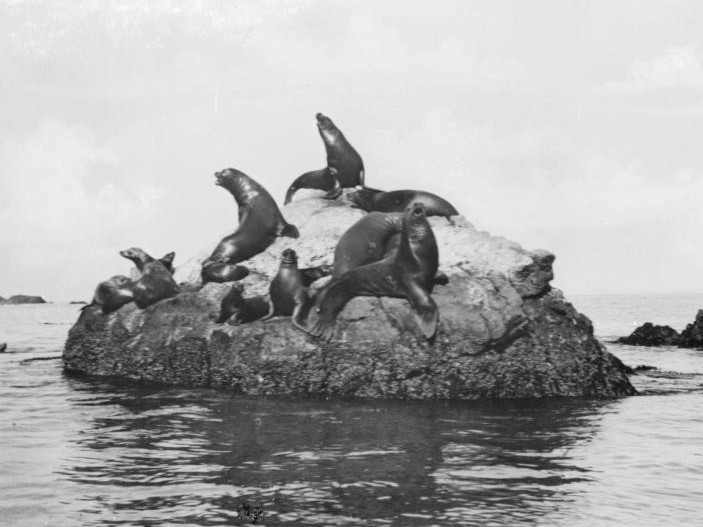
The Past Through Pinnipeds

From the 1950s through the 1990s, archaeologists excavated a number of sites on Santa Catalina Island and boxed up thousands of artifacts. And there they sat, mostly unanalyzed, for decades. Some 50 years later, Hugh Radde thought they might say something about the Tongva people who inhabited the island for millennia.
He was right. After years of sifting through and analyzing some 16,000 bones from Catalina’s West End, the graduate student in UC Santa Barbara’s Department of Anthropology concluded the Tongva exploited a previously unknown rookery of California sea lions, practiced sustainable hunting and used plank canoes to transport meat and other commodities.
His paper appears in the journal Quaternary International.
Radde’s exhaustive work over four years tells us more about human culture and subsistence strategies, he said, and provides invaluable data to establish ecological baselines of past environments.
“The skeletal remains from the West End site document what animals were living and thriving on the island approximately 1,000 years ago,” he said. “Occasionally these datasets offer new insights to past ecosystems that are no longer present today. For example, the geographic distribution of where fur seals and sea lions breed and live is starkly different today than it was in the past. Zooarchaeology is a tremendously important source of information for not only anthropologists, but also conservation biologists and environmental scientists.”
Humans have been hunting pinnipeds, the group of marine mammals that includes sea lions and seals, for millennia; some researchers believe the first migrants into North America hunted them some 13,000 years ago. Indeed, as Radde noted, predation of pinnipeds has been so pervasive that data from archaeological sites suggest they behave differently today than in the past, moving their rookeries (where they birth and raise young) and foraging areas.
For Radde, the Catalina artifacts from the late Holocene study site (roughly 1315-570 years before the present, or BP) represented an immense challenge.
“The sheer density of marine mammal remains was the first surprise,” he said. “Regional archaeologists had already established baselines for significant hunting sites based on density of animal bones. In general, these assemblages are rare. Once I realized I was knee deep in a collection characterized by this I dove deep into the literature on pinniped hunting among hunter-gatherer-fishers.”
He analyzed the majority of the artifacts at UCSB’s Faunal Lab, sorting the thousands of bones by species and, for the pinnipeds, determining sex and approximate age at death. Of the mammalian bones, California sea lions (Zalophus californianus) were the most numerous. Of those identified by sex, 75% were male, suggesting the Tongva hunted at rookeries, where adult males stay on shore to defend their territory and the helpless newborn pups.
Significantly, some 63% of the otariid (eared seals) bones belonged to subadults. As Radde notes, subadults gather at haul-outs, areas apart from rookeries where large numbers of pinnipeds congregate. Indigenous hunters practiced sustainable hunting, he argues, because taking subadults “does not drastically impact future generations.”
In addition, he said, the distribution of bones strongly suggests the Tongva transported smaller parts of males, such as limbs and flippers; males could weigh more than 800 pounds. On the other hand, Radde documented more complete remains of females (about 240 pounds) and subadults, suggesting their smaller size allowed hunters to transport more of their parts.
Radde’s analysis of the West End collection also has implications for the role of the plank canoe in pinniped hunting. He notes that UCSB’s Lynn Gamble, a professor emerita of anthropology, has argued the plank canoe was in use by 1250 BP, which coincides with the human occupation of the Catalina site. Similar sites in the Channel Islands have also been associated with advanced watercraft, he said.
“Therefore,” he writes, “I believe that the assemblage under study here could provide insights into how canoes were initially used to facilitate pinniped hunting, indirectly document the occurrence of this technology in new areas, as well as evaluate how watercraft technology impacted the behavior and spatial distribution of ancient pinniped populations.”



